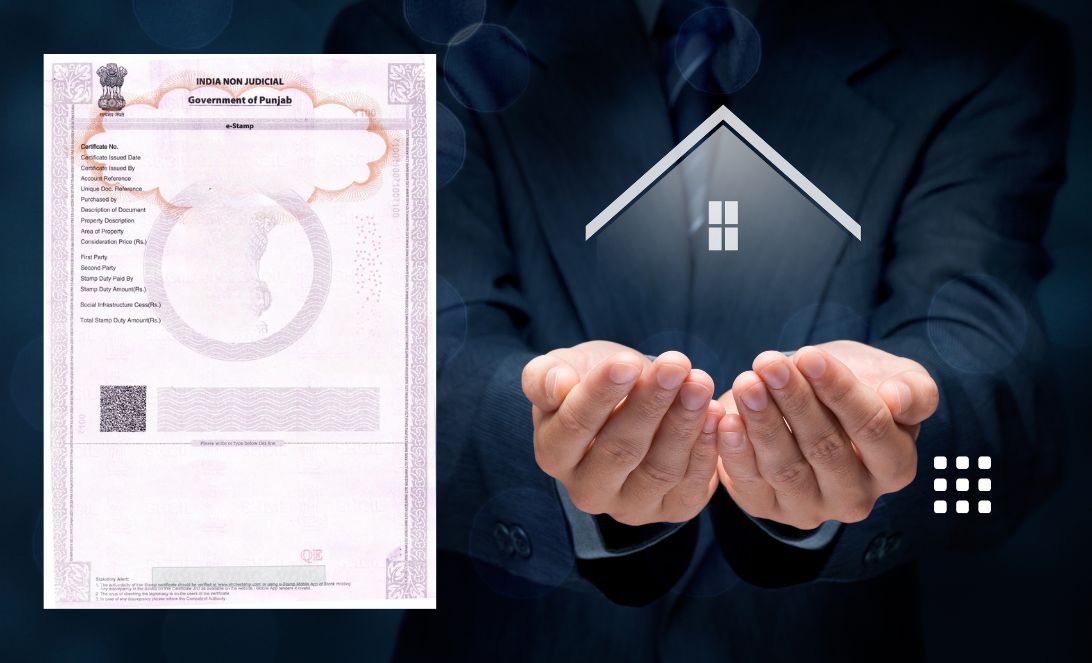The real estate industry has witnessed a significant transformation in the past few years, with digital innovations streamlining various aspects of property transactions. One such advancement is E-Stamp for property, a secure and efficient way to pay stamp duty on property documents. Let us explore the significance of E-Stamp property, its benefits and how it simplifies property transactions for buyers and developers alike.
What is an E-Stamp for Property?
An E-Stamp for a property is an electronic method of paying stamp duty to the government, replacing traditional paper based stamp papers. It is a hassle free process introduced to minimize the risks of counterfeit stamp papers and reduce paperwork delays. The system is regulated by the Stock Holding Corporation of India Limited (SHCIL) in most states, ensuring a transparent and reliable mechanism for property transactions.
Why is an E-Stamp for Property Important in Real Estate
In real estate, stamp duty is a crucial aspect of legal documentation of property agreements. Traditionally, stamp papers were manually purchased, often leading to delays, frauds and administrative inefficiencies. E-Stamp for property eliminates these concerns and provides a streamlined process that enhances credibility and security.
Key Benefits of an E-Stamp in for Property
- Convenience and Speed – E-Stamp for property allows property buyers and developers to pay stamp duty online, reducing the need for physical visits to government offices. This significantly speeds up the documentation process and ensures that transactions.
- Legally Recognized and Tamper-Proof – E-Stamp certificates for property are legally recognized and stored digitally, making them tamper proof and easily retrievable when needed. This ensures compliance with regulatory authorities and provides a reliable record of property transactions.
- Eliminates Fraud and Counterfiet Risks – Paper based stamp papers were prone to forgery and fraudulent transactions. E-Stamp for property is secure as each certificate is uniquely generated with a Certificate Identification Number (CIN) that can be verified online, ensuring authenticity.
- Availability and Accessibility – Unlike traditional stamp papers that could run out of stock, E-Stamps for property are always available. Buyers and sellers can conveniently generate E-Stamp certificates through authorized banks, SHCIL branches or online portals, making the process seamless and stress free.
- Environmentally Friendly – By reducing paper usage, E-Stamp for property contributes to environmental sustainbility. The real estate sector can embrace digital transformation while promoting eco-friendly practices in property transactions.
Also read: Joint Ownership of Property in India
How to Obtain an E-Stamp Certificate for Property
The process of obtaining an E-Stamp certificate for property is simple and straightforward.
- Visit the SHCIL website or an authorized bank’s E-Stamping portal.
- Select the state where the property transaction is taking place.
- Enter the property details, buyer and seller information and stamp duty amount.
- Make the payment online via net banking, credit/debit card or UPI.
- Download and print the E-Stamp certificate, which will contain a unique CIN and QR code for verification.
Conclusion
E-Stamp for property has changed the real estate sector making it more safe, transparent and secure to handlE-Stamp duty payments. With its ease of access, fraud prevention and legal recognition, it is undoubtedly the way forward in property transactions. As the real estate industry moves toward digitization, adopting e-stamp for property will ensure smoother, more reliable and legally sound dealings for all stakeholders.

